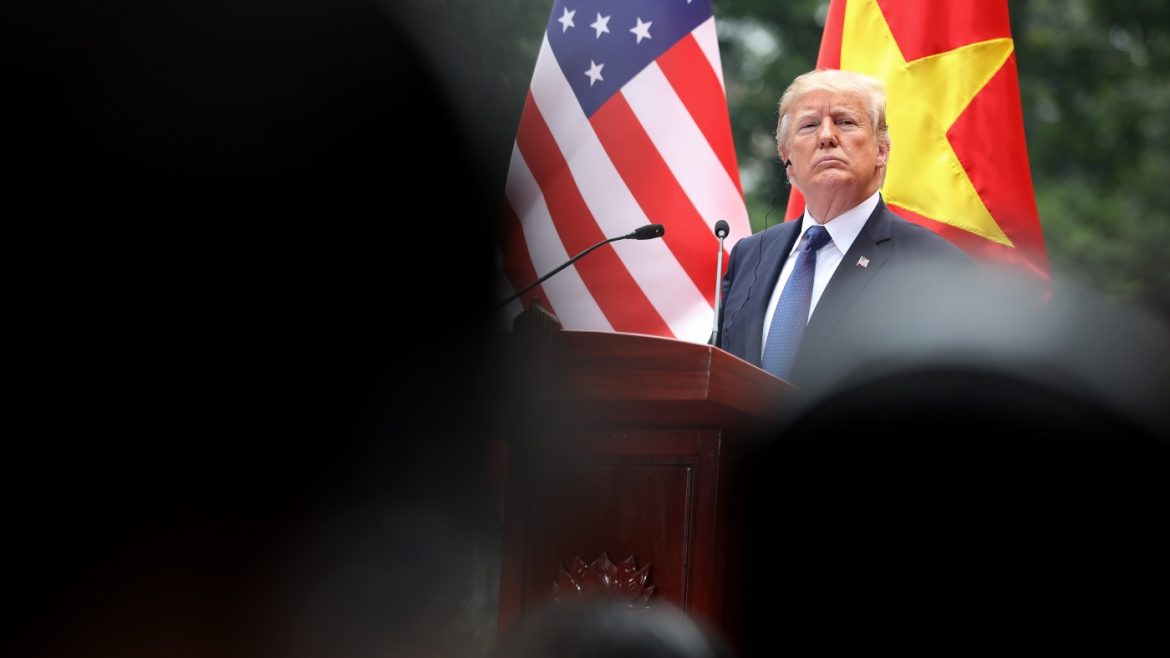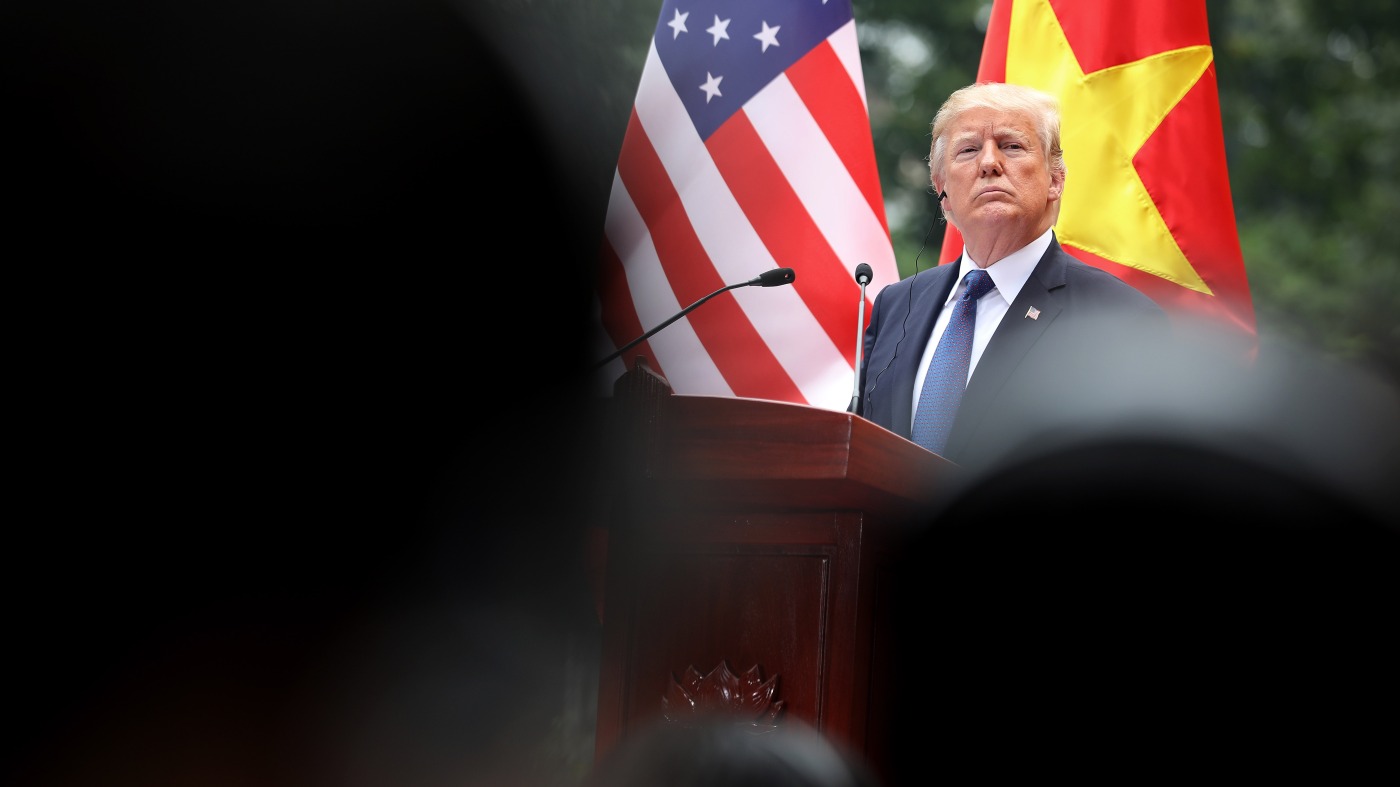The US-Vietnam trade deal, announced by former President Donald Trump, has sparked significant interest and debate within global economic circles. This agreement, while still shrouded in some ambiguity, holds substantial implications for industries such as apparel, footwear, and electronics. The deal’s core elements, including tariffs and market access, reflect Trump’s broader trade policies and the evolving dynamics of US-Vietnam relations.
The Core of the Agreement: Tariffs and Market Access
The most prominent aspect of the US-Vietnam trade deal is the imposition of tariffs on Vietnamese exports. Trump’s announcement indicated that a 20% tariff would be applied to many Vietnamese imports. This move aligns with his administration’s strategy of using tariffs to address trade imbalances and protect domestic industries. Additionally, a higher tariff of 40% was proposed for goods suspected of being transshipped through Vietnam to avoid US tariffs. This provision aims to prevent countries from exploiting Vietnam as a transit point to circumvent US trade policies.
In return, Vietnam is expected to open its market to US products, allowing them to be sold at zero tariffs. This reciprocal arrangement is designed to create a more balanced trade relationship, benefiting both economies. However, the specifics of which products will be subject to these tariffs and the exact terms of market access remain unclear, leaving room for interpretation and potential future negotiations.
Reciprocal Tariffs: A Trump Trademark
The concept of reciprocal tariffs has been a cornerstone of Trump’s trade policies. By imposing tariffs on imports, the administration aims to make foreign goods more expensive, thereby encouraging domestic production and consumption. This strategy is intended to reduce trade deficits and protect American jobs. However, the effectiveness of this approach in the context of the US-Vietnam trade deal is yet to be determined.
Critics argue that tariffs can lead to higher prices for consumers and may not necessarily result in increased domestic production. Proponents, on the other hand, contend that tariffs can create a level playing field for US manufacturers, allowing them to compete more effectively in both domestic and international markets. The outcome will depend on how Vietnam responds to the tariffs and the overall impact on global supply chains.
Addressing Transshipments: Closing Loopholes
The 40% tariff on transshipped goods is a significant component of the deal, reflecting the US’s concern about trade loopholes. Transshipment involves goods being shipped through Vietnam from other countries to avoid US tariffs. This practice has become more prevalent as companies seek to mitigate the impact of US-China trade tensions.
By imposing a higher tariff on transshipped goods, the US aims to ensure that only genuinely Vietnamese products benefit from preferential treatment. This measure is expected to encourage greater transparency and compliance in global trade practices. However, the effectiveness of this provision will depend on the enforcement mechanisms and the willingness of both US and Vietnamese authorities to monitor and regulate trade flows.
Context: Shifting Trade Dynamics
The US-Vietnam trade relationship has evolved significantly in recent years, driven by several key factors. Vietnam has emerged as a crucial player in global supply chains, particularly for apparel, footwear, and electronics. Its strategic location, relatively low labor costs, and increasing manufacturing capabilities have made it an attractive alternative to China.
The US-China trade war, initiated by Trump, has accelerated the shift of manufacturing from China to Vietnam. Companies seeking to avoid US tariffs on Chinese goods have increasingly turned to Vietnam as a production base, further boosting its exports to the US. This shift has been beneficial for Vietnam, which has seen a surge in foreign direct investment and economic growth.
From Potential Tariffs to a Deal: A Shift in Stance
Earlier in April, Trump proposed a 46% tariff on Vietnamese imports, citing concerns about trade imbalances and currency manipulation. However, these tariffs were later paused to allow for further negotiations. The current deal, with a 20% tariff, represents a moderated stance, suggesting a willingness to negotiate and find mutually acceptable terms.
This shift in stance reflects the broader geopolitical considerations at play. The US sees Vietnam as an important partner in the Indo-Pacific region, particularly in countering China’s growing influence. This strategic alignment could play a role in shaping future trade policies and ensuring a more balanced and cooperative relationship between the two countries.
Potential Impacts: Winners and Losers
The US-Vietnam trade deal is expected to have varied impacts on different sectors and stakeholders. Companies like Nike and Lululemon, which source heavily from Vietnam, initially saw their stocks jump upon the announcement of the deal. However, the subsequent clarification that a 20% tariff would be imposed tempered these gains. The deal could lead to higher costs for these companies, potentially impacting consumer prices.
For US manufacturers, the deal is touted as an opportunity to access the Vietnamese market without tariffs. However, the extent to which this will benefit US companies depends on Vietnam’s actual implementation of the zero-tariff policy and the competitiveness of US products in the Vietnamese market. Vietnamese exporters, on the other hand, will face the challenge of adapting to the new tariff regime. While the 20% tariff is lower than the initially proposed 46%, it will still increase the cost of exporting goods to the US, potentially affecting their competitiveness.
Consumers in the US could see price increases on goods imported from Vietnam, particularly apparel and footwear. The extent of these price hikes will depend on how companies choose to absorb or pass on the tariff costs. Additionally, the deal could have broader implications for global supply chains, as companies adjust their sourcing and production strategies in response to the new trade dynamics.
Uncertainties and Caveats: Details Matter
While the announcement of the trade deal has generated excitement, several uncertainties remain. The lack of detailed information about the agreement is a significant concern. The specifics of which goods will be subject to the 20% tariff, how the zero-tariff policy for US goods in Vietnam will be implemented, and the enforcement mechanisms for preventing transshipments are crucial details that have yet to be revealed.
Political considerations also play a role in shaping the US-Vietnam trade relationship. The US sees Vietnam as an important partner in the Indo-Pacific region, particularly in countering China’s growing influence. This strategic alignment could play a role in shaping future trade policies and ensuring a more balanced and cooperative relationship between the two countries.
Implementation challenges could also arise, even with a signed agreement. Ensuring compliance with the terms of the deal, resolving disputes, and adapting to changing economic conditions will require ongoing effort and cooperation from both sides. The success of the agreement will depend on the details, the implementation, and the broader geopolitical context.
A Tentative Truce: The Road Ahead
The US-Vietnam trade deal represents a significant development in the trade relationship between the two countries. While the deal includes tariffs, it also opens up opportunities for increased trade and investment. The deal reflects a willingness of both sides to engage in negotiations and find common ground. However, the success of the agreement will depend on the details, the implementation, and the broader geopolitical context.
As details emerge, a clearer picture of the deal’s true impact will undoubtedly surface. Until then, it remains a tentative truce in the ongoing saga of global trade. The road ahead will be shaped by the evolving dynamics of US-Vietnam relations, the broader geopolitical landscape, and the ongoing efforts to address trade imbalances and promote economic cooperation. The deal serves as a reminder of the complex and interconnected nature of global trade and the need for continued dialogue and collaboration to navigate the challenges and opportunities that lie ahead.


